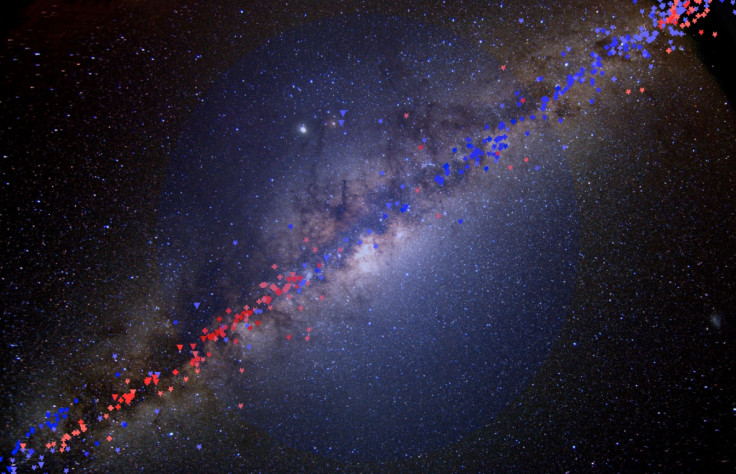Dark Matter detected in abundance close to Earth and inner Milky Way

More evidence is pouring in for the presence of dark matter in the deep recesses of the Milky Way including in the vicinity of Earth.
A Stockholm study points to large amounts of dark matter around us, and also between us and the galactic centre.
Proof for dark matter in outer parts of our galaxy has been seen before but this is the first evidence of its presence in the inner Milky Way where our solar system is located.
It had proven difficult so far to measure rotation of gas and stars with precision from our position in the galaxy.
"We have created the most complete compilation so far of published measurements of the motion of gas and stars in the Milky Way, and compared the measured rotation speed with that expected under the assumption that only luminous matter exists in the Galaxy. The observed rotation cannot be explained unless large amounts of dark matter exist around us, and between us and the Galactic centre," says Miguel Pato at the Department of Physics, Stockholm University.
The method used is expected to help measure precisely dark matter distribution and understand the structure and evolution of our galaxy better.
It has been known that dark matter lurks in and around the galaxy (and universe). More recently, studies have hinted at a shortage of pulsars in the centre of the Milky Way being due to dark matter turning them into black holes.
A slowing down in growth of galaxies and clusters has been attributed to energy transfer between dark energy and dark matter with dark matter losing out.
Dark matter is believed to make up almost 85% of matter in the universe. Without accounting for these massive but "unseen" particles, most galaxies in the accelerating universe would have spun away a major part of their material.
The gravitational force exerted by dark matter is keeping the universe intact.
Dark energy on the other hand is what is believed to be behind the accelerating universe, pushing away galaxies by counteracting the gravity of dark matter.
Dark energy constitutes the major part of the universe.
The existence of dark matter in galaxies was established in the 1970s with a variety of techniques, including the measurement of the rotation speed of gas and stars, which provides a way to effectively "weigh" the host galaxy and determine its total mass.
Due to their nature of weak interactions with matter, they can only be detected indirectly from the gravity they exert or from the products of their interactions.
The exact nature of dark matter remains unknown with scientists differing on the matter, antimatter constituents. Some have suggested that dark matter may not be made of exotic particles while latest suggestions include one saying these are strange, very light particles that interact strongly with normal matter.
© Copyright IBTimes 2025. All rights reserved.





















